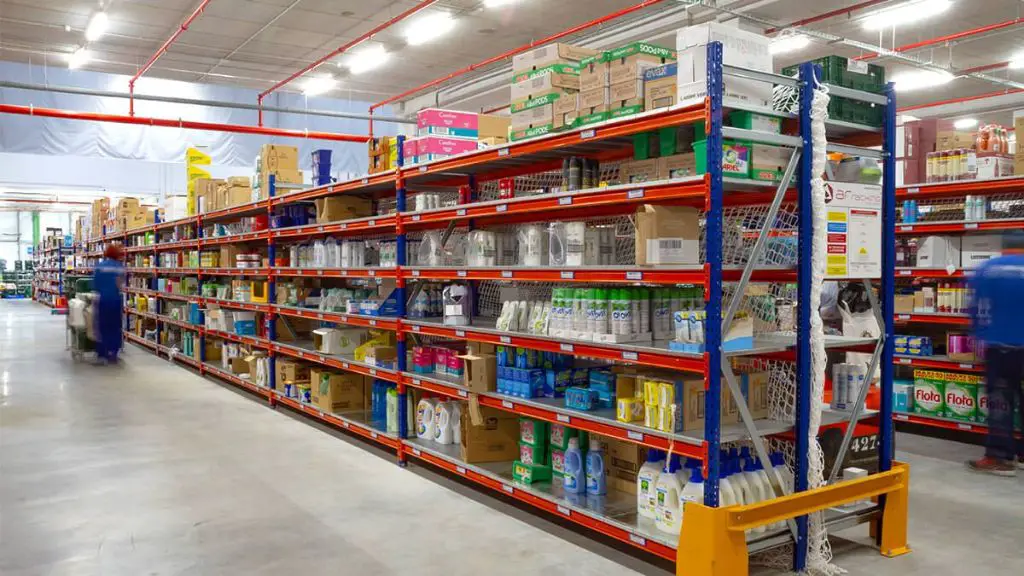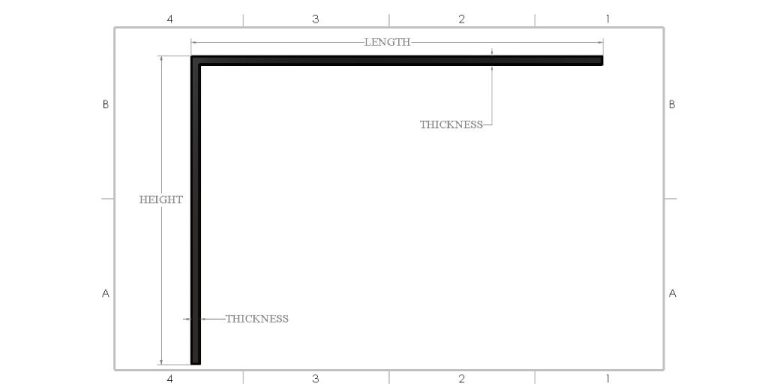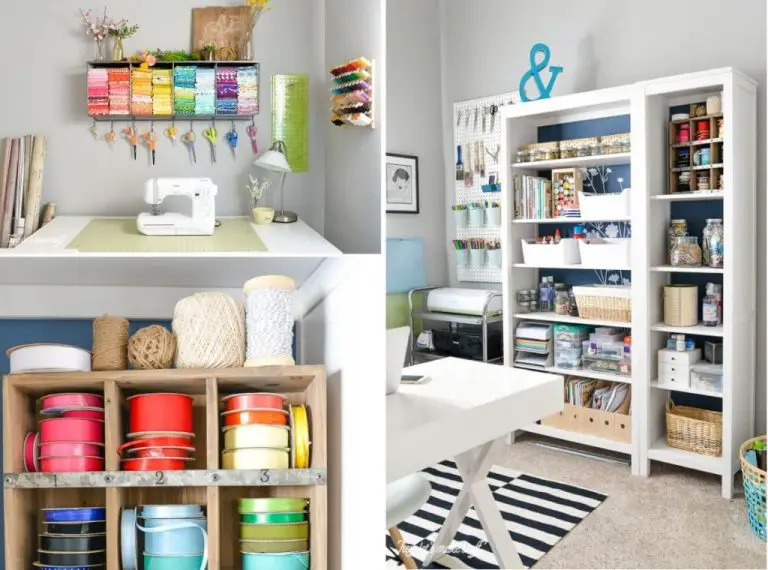How Much Weight Can A Shelf With Brackets Hold?
The maximum weight that a shelf and bracket system can support depends on several factors, including the type of shelf, type of brackets, load types, shelf span, and safety factors. To determine the load capacity, you must consider the physics concepts of shear strength, bending moments, and deflection. The material strength and thickness, along with the type of loading, are key determinants. This article provides an overview of how to calculate the maximum load for a shelf and bracket system.
First, it’s important to understand the different types of loads. Point loads refer to objects with a focused weight on a small surface area. Uniformly distributed loads involve items spread evenly across the shelf. The load type affects how shear and bending forces are calculated. Additionally, the shelf span length is a crucial factor. Longer shelves undergo greater deflection in the middle.
We must also consider the material’s shear strength, flexural strength, and ability to resist bending moments. The farther away the load from the brackets, the higher the stresses. Safety factors account for variables like dynamic loads, material defects, and long-term use. Proper installation and testing is critical to prevent collapse.
By analyzing these physics concepts, we can gain a thorough understanding of the maximum load capacity for a shelf and bracket system. The following sections will explore these factors in detail.
Types of Shelves
There are several main types of shelves to consider based on how they are mounted and the materials they are made of. The main types of shelves are:
Freestanding Shelves
Freestanding shelves are standalone units that do not attach to the wall. They often have an extra-wide, sturdy base for stability. Freestanding shelves come in varying heights like standard bookshelves, or taller storage units. Materials commonly used for freestanding shelves include wood, metal, and glass.
Wall-Mounted Shelves
Wall-mounted shelves attach directly to the wall. They come in floating styles with hidden brackets or ledge styles with visible brackets. Materials include wood, metal, and glass. This style works well for custom fitted or built-in shelving.
Floating Shelves
Floating shelves attach to the wall with hidden brackets to look like they are floating. Floating shelves work best for lighter items, as the hidden brackets are not as strong as visible brackets. Materials are commonly wood, glass, or metal.
Types of Brackets
There are several main types of shelf brackets to choose from:
L Brackets – These basic brackets are shaped like an “L” and provide a simple and inexpensive option. They are typically made from steel, aluminum or wood. L brackets only provide support on one side of the shelf.
T Brackets – T brackets provide support on two sides of a shelf rather than just one. The cross support on a T bracket helps prevent tipping or sagging. T brackets are a good choice for longer shelves. They are usually made from steel or aluminum.
Floating Shelf Brackets – Floating shelves do not have visible brackets. The brackets are mounted to the wall and include various mechanisms to mount the shelf invisibly to the wall. This creates a floating look. Floating shelf brackets are commonly made from steel.
Load Types
Shelves experience different types of loads that impact their maximum capacity. The main categories are point loads vs. distributed loads, and static vs. dynamic loads.
Point loads concentrate force and pressure on a small area of the shelf. Examples are stacks of heavy objects or people standing on part of a shelf. Distributed loads spread force more evenly across the entire shelf surface. Distributed loads often come from storage of many smaller items covering the shelf.[1]
Static loads remain constant over time, like stationary items in storage. Dynamic loads change over time, like people moving around on a shelf. Dynamic loads put more stress on shelves and require stronger brackets.[2]
The most demanding situation is a concentrated point load that also changes dynamically. Carefully calculating load types leads to better shelf and bracket selection for safety.
Max Load Calculations

The maximum load a shelf can hold depends on several factors including the shelf material, bracket type, shelf span, and mounting method. Here are some guidelines for calculating max load:
For wooden shelves up to 36 inches long, a good rule of thumb is that the shelf can hold up to 50 lbs per bracket. For example, a shelf with two brackets could hold around 100 lbs [1]. For longer spans or heavy duty use, divide the load between 3 brackets instead of 2.
Metal shelving systems like the popular IKEA Algot system have published max loads based onbracket type and span. For example, the Algot wall shelves safely hold:
- 110 lbs with 19 7/8″ span using two standard brackets
- 137 lbs with 19 7/8″ span using two heavy duty brackets
- 55 lbs with 39 3/4″ span using two standard brackets
For DIY installed shelves, structural engineers recommend a max load of 20-25 lbs per square foot for wall-mounted shelves in studs. This assumes properly installed #10 screws in good quality studs [2].
There are also more complex engineering formulas that incorporate the shelf material, span, thickness, and bracket type to calculate maximum loading. These formulas require determining the modulus of rupture and modulus of elasticity for the shelf material. Consult an engineer for advice on advanced calculations.
Shelf Span
The length of the shelf between supports, known as the shelf span, is a key factor in determining the maximum load capacity. Longer spans require stronger shelves that can resist sagging under load without deforming or breaking. According to The Sagulator, a fully loaded bookshelf can weigh 20-40 lbs per running foot, so a wider 3 foot shelf may hold 60-120 lbs.
The maximum recommended span depends on the type of shelf material. Solid wood boards used as shelves typically allow spans of 36-48 inches between brackets. Plywood shelves are strong enough to handle spans of 48-72 inches depending on thickness. Particle board and plastic laminated shelves should be limited to 36-48 inch spans.
It’s important to limit deflection, or sagging, under maximum load to acceptable levels, often around 1/8 inch along the shelf width. Large deflections put greater stress on the shelf material and brackets. Refer to manufacturer specifications for the allowable deflection for a shelf system. Reducing shelf span is one method to minimize deflection for a given load capacity.
Mounting Considerations
Properly mounting shelves to walls is crucial for safety and load-bearing capacity. Here are some key mounting considerations:
Locate wall studs for mounting whenever possible. Wall studs provide the most secure mounting base. Use a stud finder to locate studs and mark their positions.
For mounting between studs, use hollow wall anchors that are rated for the expected shelf load. Expanding anchors and toggle bolts work well in drywall. Use appropriate anchors for masonry walls.
Follow the manufacturer’s instructions carefully when installing anchors and brackets. Drill pilot holes before inserting anchors. Allow proper curing time for adhesive anchors before loading shelves.
Use the correct fasteners for the brackets. Mount into wall studs with wood screws. Use lag screws or bolts for masonry walls. Ensure fasteners are long enough to securely mount the brackets.
Space brackets close enough for the shelf length and load. For heavy loads, place brackets closer together. Load-bearing walls provide better support than partition walls.
Make sure brackets are level. Use a level tool on the brackets for proper shelf installation. Load shelves gradually after mounting. Avoid overloading beyond recommended weight capacities.
Refer to sources like this forum discussion for more mounting tips.
Safety Factors
It is important to consider safety factors when calculating the maximum load a shelf can hold. Safety factors account for uncertainties and prevent failures by reducing the maximum load used in design calculations. According to Choosing Safety Factor for Load-Bearing Structures, typical overdesign factors range from 1.5 to 4 depending on the application. Higher safety factors like 4 are used for items like ladders and scaffolds where failure could endanger human life. Lower factors around 1.5-2 are often acceptable for shelves and storage racks. The ultimate strength of the shelf and brackets should be divided by the desired safety factor to get the working or design load.
It is also wise to consider real-world variables that could reduce the shelf’s capacity compared to calculations. Factors like uneven loading, corrosion, wear over time, and shake/vibrations can reduce the maximum safe load. According to Defining Factor of Safety for Design and Use, safety factors account for these uncertainties. It is best practice to be conservative with shelf loading, as exceeding the design load could lead to shelf collapse and property damage or injury.
Testing Shelves
To obtain real world data on how much weight shelves can hold, it’s important to conduct physical tests that simulate actual usage conditions. This provides empirical evidence beyond just relying on the rated load capacity from the manufacturer.
A robust testing methodology would include:
- Using actual shelves and brackets that will be installed
- Attaching the shelf with the same fasteners and to the same type of vertical supports as the final installation
- Placing test weights incrementally up to failure
- Testing both static and dynamic loads (e.g. placing weights, then bouncing them up and down to simulate shelf usage)
- Testing both centered loads and loads placed at front/back extremities which exerts max torque on brackets
- Repeating tests across multiple shelf samples to identify variances
By testing to failure under real conditions, you can determine the actual maximum safe working load for your shelf configuration. This provides additional safety assurance beyond just relying on generic load ratings.
Some testing methodologies and results have been shared online, for example by redditor u/homelab who tested his rack shelves to failure.
Conclusion
Shelf load capacities depend on several key factors, including the thickness and material of the shelf, type of mounting brackets used, and shelf span between supports. It’s critical to follow manufacturer specifications and best practices when installing shelves to ensure they can safely bear the intended load.
Shelf thickness plays a major role, with thicker shelving able to support more weight. Shelves made of strong materials like steel and hardwood can hold more than thinner, less sturdy materials. Load capacity decreases significantly as shelf span increases, so following guidelines for maximum distance between brackets is essential.
Load should be evenly distributed across shelves to avoid concentrated weight that could cause failure. Brackets must be properly secured into solid wall studs or other robust structural supports. Manufacturers indicate total load capacities based on testing – do not exceed those limits.
Using the right shelves, brackets, and installation techniques helps ensure your shelves don’t bend or collapse when loaded. Always double-check weight limits and follow the manufacturer’s instructions to keep shelves stable and prevent damage or injury.






